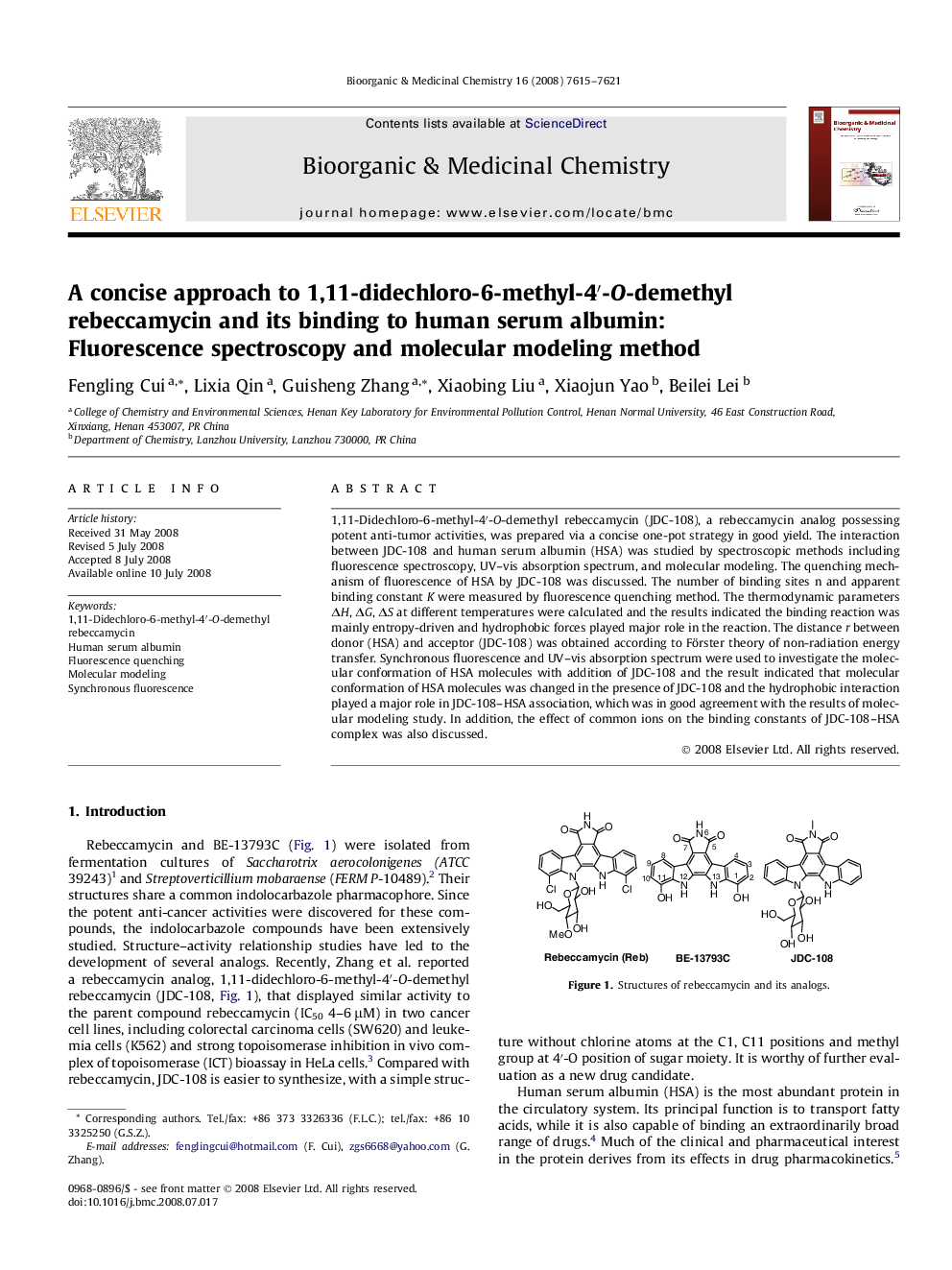| کد مقاله | کد نشریه | سال انتشار | مقاله انگلیسی | نسخه تمام متن |
|---|---|---|---|---|
| 1361101 | 981457 | 2008 | 7 صفحه PDF | دانلود رایگان |

1,11-Didechloro-6-methyl-4′-O-demethyl rebeccamycin (JDC-108), a rebeccamycin analog possessing potent anti-tumor activities, was prepared via a concise one-pot strategy in good yield. The interaction between JDC-108 and human serum albumin (HSA) was studied by spectroscopic methods including fluorescence spectroscopy, UV–vis absorption spectrum, and molecular modeling. The quenching mechanism of fluorescence of HSA by JDC-108 was discussed. The number of binding sites n and apparent binding constant K were measured by fluorescence quenching method. The thermodynamic parameters ΔH, ΔG, ΔS at different temperatures were calculated and the results indicated the binding reaction was mainly entropy-driven and hydrophobic forces played major role in the reaction. The distance r between donor (HSA) and acceptor (JDC-108) was obtained according to Förster theory of non-radiation energy transfer. Synchronous fluorescence and UV–vis absorption spectrum were used to investigate the molecular conformation of HSA molecules with addition of JDC-108 and the result indicated that molecular conformation of HSA molecules was changed in the presence of JDC-108 and the hydrophobic interaction played a major role in JDC-108–HSA association, which was in good agreement with the results of molecular modeling study. In addition, the effect of common ions on the binding constants of JDC-108–HSA complex was also discussed.
The tryptophan residue (Trp214) and the lysine residue (Lys195) of HSA are in close proximity to the pentenyl moiety of JDC-108, suggesting the existence of hydrophobic interaction between them.Figure optionsDownload as PowerPoint slide
Journal: Bioorganic & Medicinal Chemistry - Volume 16, Issue 16, 15 August 2008, Pages 7615–7621